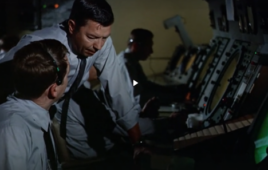T-Mobile continues to rail against AT&T’s acquisition of more low-band spectrum licenses.
In a July 2 filing with the FCC that was made public Monday, T-Mobile argues that AT&T has not proven that its purchase of more low-band spectrum would “promote the public interest in competition, consumer choice, deployment, and innovation.”
T-Mobile is asking the FCC to deny the transaction to limit the aggregation of more low-band spectrum with AT&T and Verizon.
This isn’t the first time T-Mobile has taken issue with AT&T’s spectrum purchases. The Un-Carrier also took issue with a transfer of low-band licenses from East Kentucky Network that would affect consumers in Kentucky, Ohio, and West Virginia.
With the Club 42 purchase, AT&T would acquire Lower 700 MHz B block licenses in San Luis Obispo, CA and parts of Kings County. Both licenses consist of 12 megahertz of low-band spectrum that will be directly contiguous to AT&T’s Lower 700 MHz C block licenses in those markets.
In its filing, AT&T points out that AT&T already holds 49 megahertz of low-band spectrum in San Luis Obispo, which is more than one-third of the spectrum below 1 GHz that is suitable and available in the market, and would hold 61 megahertz of low-band spectrum once the transaction is completed.
AT&T asserts that its purchase of more spectrum in the lower bands would benefit the public by enabling it to improve and deploy wireless serivce to customers without causing harm to competition in those areas.
In a blog post addressing the East Kentucky Network licenses, AT&T Vice President of Federal Regulatory Affairs, Joan Marsh, turned tables on T-Mobile, calling its objection part of a “disdain for rural investment.”
“Looking at T-Mobile’s current and proposed coverage maps, it’s readily apparent that T-Mobile offers very little coverage in these markets today,” Marsh wrote. “Moreover, even as it purportedly expands to cover 300M POPs by the end of 2015, T-Mobile has only limited plans to invest in the rural markets covered by these licenses, particularly those in West Virginia.”
Marsh went on to say that T-Mobile has 20-30 MHz of AWS spectrum in all of these markets that it could be using to serve these rural communities if it chose.
“Finally, if T-Mobile wants low band spectrum for these markets, it could buy the 700 MHz A block spectrum (which is largely undeployed in these markets) and deploy it – a path it is following for many other markets,” Marsh argued.
Filed Under: Industry regulations, Telecommunications (spectrums)




